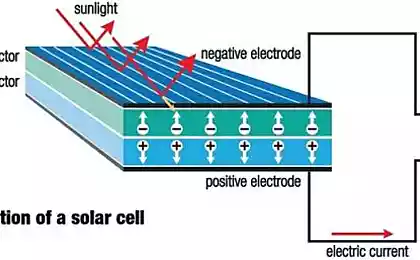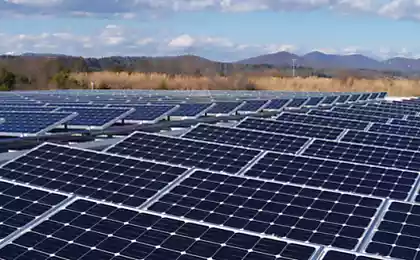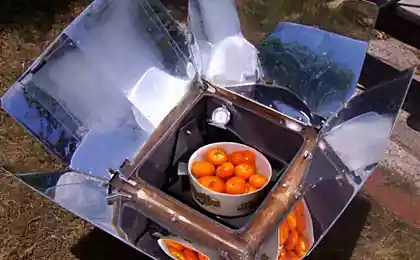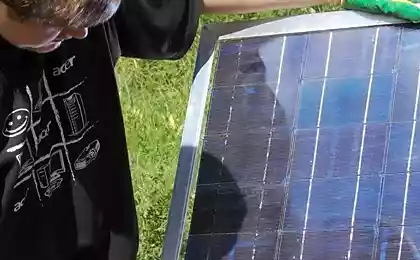491
Influential people in the field of photovoltaic stand up for perovskite solar panels
In an international team influential researchers on photovoltaic issues, headed by the national laboratory for researches in the field of renewable energy sources, have embarked on the promotion pervoskite solar panels on the commercial market.
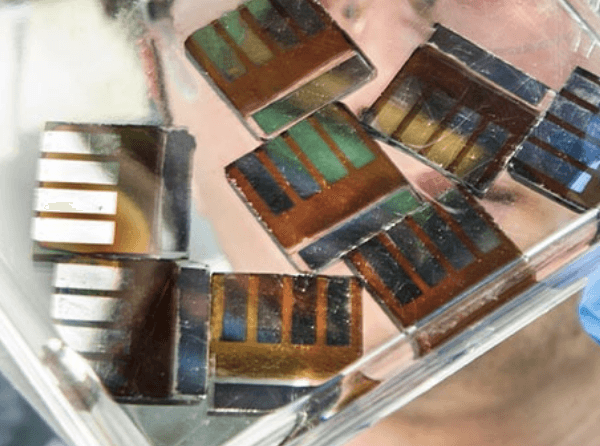
If the dream becomes a reality, will happen two parallel things: solar panels have become cheaper, and the plants should begin to produce them faster and more efficiently.
Yes, Perovskite Solar Cells
For those of you for whom this topic is new, the perovskite belongs to the class of crystalline materials. Its structure is based on natural mineral perovskite, and easy and cheap can be synthesized.
These properties make perovskite tempting to replace silicon. Currently, silicon is the gold standard for the production of highly efficient solar panels, but at the same time expensive, it is vulnerable to price and supply on the world market commodities, and this requires a relatively complicated manufacturing process.
Scientists first looked at the perovskite in 2009 and reached a conversion efficiency of slightly less than 4%. It's a pretty meager performance in comparison with silicon, but a quick move forward and a huge effort by 2016 increased this figure to a range of 15-20%, exceeded the estimates by more than 22%.
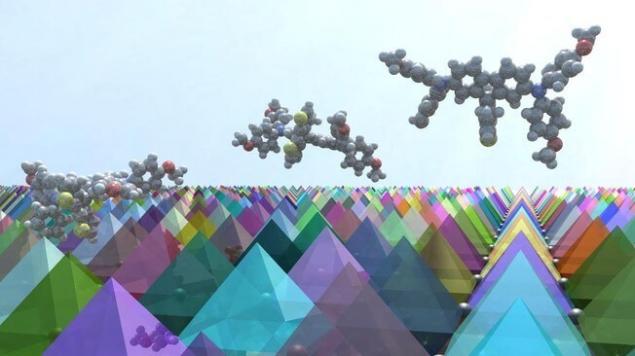
Such a crazy rate of improvement is almost unheard of in the field of photovoltaic research, and the researchers foresee that he is destined to even greater efficiency gains.
So, what's the problem?
Several major obstacles stand between perovskite and your new roof is covered with solar panels. On the one hand, the perovskite tend to fall apart under the influence of moisture.
Go to the solution — still means to synthesize the perovskite, together with lead, but it opens up a whole range of problems in the value of the potential hazards to the environment and health. Some researchers beginning to experiment with the perovskite solar cells without the use of lead, but this path seems to be long.
Perovskite solar panels to the masses
Apparently, a team of scientists, NVAL is reluctant to bring perovskite solar panels to the masses, and they are not waiting for the release version without the use of lead.
New materials, published in the journal "Nature Energy", the team has proposed a strategy for the commercialization of particularly promising perovskite batteries class Haider.
The study was called "Towards a stable and commercially available perovskite solar", which outlined three issues:
Long-term durability; a Manufacturing method which can produce recoverable, high-performance device without hysteresis; Robust characteristics of the device. Hysteresis refers to interference in the health system due to the time delay between its past and present production output. Root "hys" refers to history (time) and not hysteria.
In particular, the proposed production method solves the problems of the crystalline block boundaries ("border", refers to the interface between the particles in the crystalline material, which can reduce efficiency ), and other factors leading to reduced efficiency.
The authors propose using the methodology of electroluminescence to provide a standard for measuring the conversion efficiency.
The study also covers the strategy for the recycling and re-use of lead used in the perovskite solar cells. Here is a quote about money from a brief overview:
"We believe that devices based on the perovskite can compete with solar modules from silicon, and discussed issues related to the safe handling of toxic materials. "Report the authors of the study are Nam-Gyu Park from Korea University, Sunkyunkwan, Michael Gratzel ("the father of thin-film solar cells") from the Swiss Federal Polytechnic school of Lausanne, Tsutomu of Misaka from the University of Yokohama, and the Case Emery of the National laboratory of renewable energy sources. published
Source: cleantechnica.com/2016/10/18/pvs-heavy-hitters-go-to-bat-for-perovskite-solar-cells/

If the dream becomes a reality, will happen two parallel things: solar panels have become cheaper, and the plants should begin to produce them faster and more efficiently.
Yes, Perovskite Solar Cells
For those of you for whom this topic is new, the perovskite belongs to the class of crystalline materials. Its structure is based on natural mineral perovskite, and easy and cheap can be synthesized.
These properties make perovskite tempting to replace silicon. Currently, silicon is the gold standard for the production of highly efficient solar panels, but at the same time expensive, it is vulnerable to price and supply on the world market commodities, and this requires a relatively complicated manufacturing process.
Scientists first looked at the perovskite in 2009 and reached a conversion efficiency of slightly less than 4%. It's a pretty meager performance in comparison with silicon, but a quick move forward and a huge effort by 2016 increased this figure to a range of 15-20%, exceeded the estimates by more than 22%.

Such a crazy rate of improvement is almost unheard of in the field of photovoltaic research, and the researchers foresee that he is destined to even greater efficiency gains.
So, what's the problem?
Several major obstacles stand between perovskite and your new roof is covered with solar panels. On the one hand, the perovskite tend to fall apart under the influence of moisture.
Go to the solution — still means to synthesize the perovskite, together with lead, but it opens up a whole range of problems in the value of the potential hazards to the environment and health. Some researchers beginning to experiment with the perovskite solar cells without the use of lead, but this path seems to be long.
Perovskite solar panels to the masses
Apparently, a team of scientists, NVAL is reluctant to bring perovskite solar panels to the masses, and they are not waiting for the release version without the use of lead.
New materials, published in the journal "Nature Energy", the team has proposed a strategy for the commercialization of particularly promising perovskite batteries class Haider.
The study was called "Towards a stable and commercially available perovskite solar", which outlined three issues:
Long-term durability; a Manufacturing method which can produce recoverable, high-performance device without hysteresis; Robust characteristics of the device. Hysteresis refers to interference in the health system due to the time delay between its past and present production output. Root "hys" refers to history (time) and not hysteria.
In particular, the proposed production method solves the problems of the crystalline block boundaries ("border", refers to the interface between the particles in the crystalline material, which can reduce efficiency ), and other factors leading to reduced efficiency.
The authors propose using the methodology of electroluminescence to provide a standard for measuring the conversion efficiency.
The study also covers the strategy for the recycling and re-use of lead used in the perovskite solar cells. Here is a quote about money from a brief overview:
"We believe that devices based on the perovskite can compete with solar modules from silicon, and discussed issues related to the safe handling of toxic materials. "Report the authors of the study are Nam-Gyu Park from Korea University, Sunkyunkwan, Michael Gratzel ("the father of thin-film solar cells") from the Swiss Federal Polytechnic school of Lausanne, Tsutomu of Misaka from the University of Yokohama, and the Case Emery of the National laboratory of renewable energy sources. published
Source: cleantechnica.com/2016/10/18/pvs-heavy-hitters-go-to-bat-for-perovskite-solar-cells/
This drink is a cocktail of youth for your skin.
Russia will increase the capacity of renewable energy by the end of 2021 3.9%



